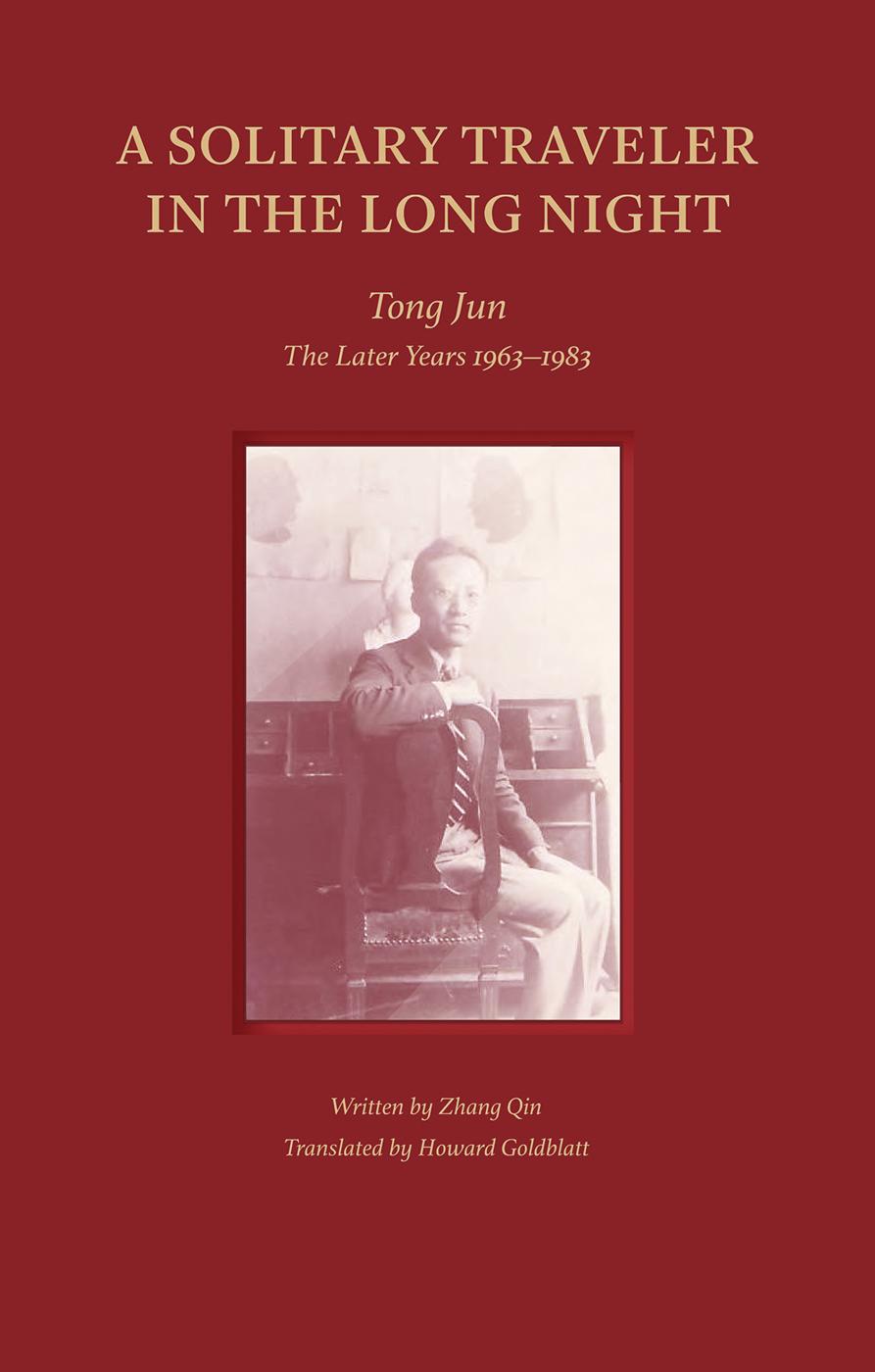
Artists are expected to work with and through material media. However, when circumstances pose limitations and the world deals unfairness and trials, their resolve rises to the occasion: they work with their own lives. In doing so, they produce great artworks, using their own lives as the medium. Such was the story of Tong Jun (1900–1983). Born with a lineage of Manchu nobility, he grew up with memories of a vanished world and trying circumstances of a tumultuous time: the fall of the imperial Qing dynasty, and the subsequent decades when the nation was looking for its identity and new directions. His architectural training in the University of Pennsylvania (UPenn) in the U.S. and his extensive travels in Europe made him a citizen of the world—a self-identity that he held onto until his last days. His exquisite and sensitive watercolors register his impressions of his itinerary perceptions of Europe and the civilizational memories of human achievements.
When he returned to China, he was determined, and destined, to materialize and map that perception of civilizational grandeur onto a clean slate of the future of his native land. But reality soon sank in. He realized that the utopian disposition of ambitious architects needed to first square with the brutal reality of the real world; the dream world, in which students of architecture are schooled and immersed, needed to interface with the actual world to achieve some degree of parity. For those holding tenaciously
onto the pristine dream world, unwilling to compromise, the way out of the quagmire of disconnect or ill fit was to seek a third space. So, Tong Jun parted ways, in career paths and with his college roommate and soulmate, Liang Sicheng (1901–1972). The two UPenn alumni were equally well-trained, ambitious, and motivated. Liang opted to launch his architect’s career in the north. With Greek temples as his measuring rod, Liang was bent on finding Chinese equivalents in surviving historical monuments. He was also eager to materialize this “monumental” aspiration into modernized brick-and-mortar reality. Tong Jun chose a different route; he declined the invitation to stay in northern China. Not that Tong Jun was averse to monumentality. He shared Liang’s monumental vision. In fact, he held the “monumental dream” to his bosom, literally.
The copy of Sir Banister Fletcher’s A History of Architecture on the Comparative Method he owned was repeatedly in danger of being lost to his constant turmoils. On one occasion, when he and his family were fleeing to Beiping (today’s Beijing), they were waylaid by train robbers who killed the train driver and left the train stranded in the wilderness. Tong Jun’s brother, Tong Yin, took it upon himself to drive the train to its destination. Focused on a more vital task at hand, Tong Jun clutched close Fletcher’s book and its accompanying slides. He was fine with the potential loss of all the luggage and belongings, but not that. The whole incident was uncanny, to say the least. The first edition of Fletcher’s book features a photograph with the caption: “The Acropolis, Athens. With the Temple of Theseus in the foreground.” But this caption is not entirely accurate. The Temple of Theseus actually occupies the middle ground. In the foreground are railroad tracks. It is as if Fletcher’s A History of Architecture on the Comparative Method, in its 1896 edition, had already foretold the railroad episode of Tong Jun’s story. It is as if Tong Jun’s life was destined to enact the visual script already laid out in the 1896 edition of Fletcher’s architectural history. Historical monuments, such as
One day, midway through the year 1982, Tong Jun sat in his usual spot in the Nanjing Institute of Technology reference room, reading a book.
Tong Jun led a very disciplined life, leaving his residence in Wenchang Lane (Nanjing) for the half-hour walk to the university (Nanjing Institute of Technology), where he read books and jotted down notes. As time passed, instructors and students in the Architecture Department became used to seeing the familiar figure sitting in the same spot. Occasionally, a student would ask him a question; sometimes he would answer on the spot, at other times, he’d write down the question to respond later. He called himself a clock, possibly either because he was as punctual as a clock, or because he sat in the same spot each day, day after day, like a desk clock, or even maybe because he had little to say other than to respond to questions—like a bell that sounds off only when it is struck. During the Cultural Revolution, 22 on one of the times when Tong Jun was asked to hand over “confessional material,” he wrote:
In 1962, I told young instructors in the teaching and research group, “Develop the skill of asking questions and raising issues. Take a bell, for instance: if you strike it hard, it rings out loudly; if you strike it gently, it rings out softly; and if you don’t strike it, it makes no sound.”23
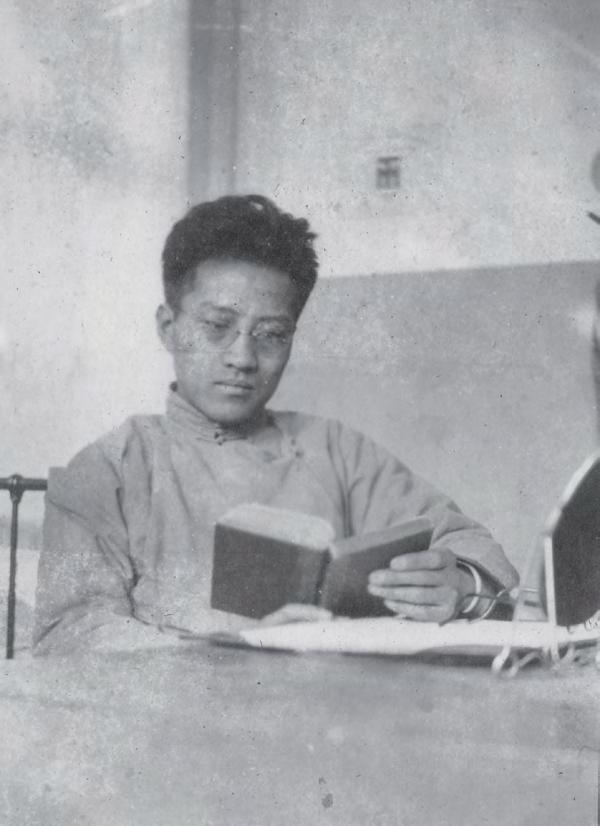
That was how he encouraged students to ask questions. Tong Jun was known as a “living dictionary.” When faculty and students in the Architecture Department needed answers to academic questions, they went to Tong Jun. Yan Longyu recalled:
A particular table and chair in the periodicals room was Tong Jun’s constant companion and the site where students, researchers, and instructors in the department went with their questions. He never felt put upon by people who came with questions, and whatever the subject—Chinese or foreign; ancient or modern; architecture to art; literature to history—he had answers. For foreign words that did not appear in common dictionaries, he would explain them by way of anecdotes or narratives in which they appeared. If asked a question he could not answer for the moment, he never tossed off a careless or evasive response, but would find the answer and then give it to the person who had asked the question.24
Fang Yong also recounted 25 one instance when a student had come to Tong Jun with a question he did not know how to answer. Fang Yong, who witnessed the incident, was stunned to see his teacher get red in the face. He was moved to discover that his teacher had an almost childlike innocence.
In early 1982, following his graduation from the architecture department at Nanjing Institute of Technology, Fang Yong was admitted into Tong Jun’s master’s program in architectural history. He was the first person admitted into the program after passing an entrance exam with questions from his future teacher. According to Fang Yong, only after he began his studies was Tong Jun paid at the highest salary tier for a professor.
Professor Tong’s teaching method was to schedule meetings with his students to discuss topics. He did not
In 1981, two books—Tong Jun Watercolor Album 91 and Tong Jun Sketch Album92 —were published. Most of the artwork was executed in 1930, when the author was touring Europe.
Tong Jun’s schoolmate and confidant Chen Zhi wrote:
Tong Jun studied oil painting as a child, which created a solid foundation for sketching. At Tsing Hua, he devoted much of his time to watercolors. At the University of Pennsylvania, he studied under the renowned American watercolor artist George W. Dawson, under whose mentorship he made great progress. His rapid brush strokes and deft touch on the paper had his fellow students saying, “He has eyes like a camera.” He could work in pencil, charcoal, crayons, and chalk, as well as watercolors—in which he excelled, incorporating bold, vigorous strokes, brilliant colors, and multiple themes that had remarkable appeal. He was adept in employing fluid, broad brush strokes, as well as meticulously controlled sketches.93
From 1933 to 1937, Tong Jun studied traditional Chinese painting with artist Tang Dingzhi who was seeking refuge in Shanghai. Tang, also named Tang Di, was a Beijing-based master of calligraphy and painting. Twenty-two years older than Tong Jun, he was in the prime of his life when Tong Jun studied under
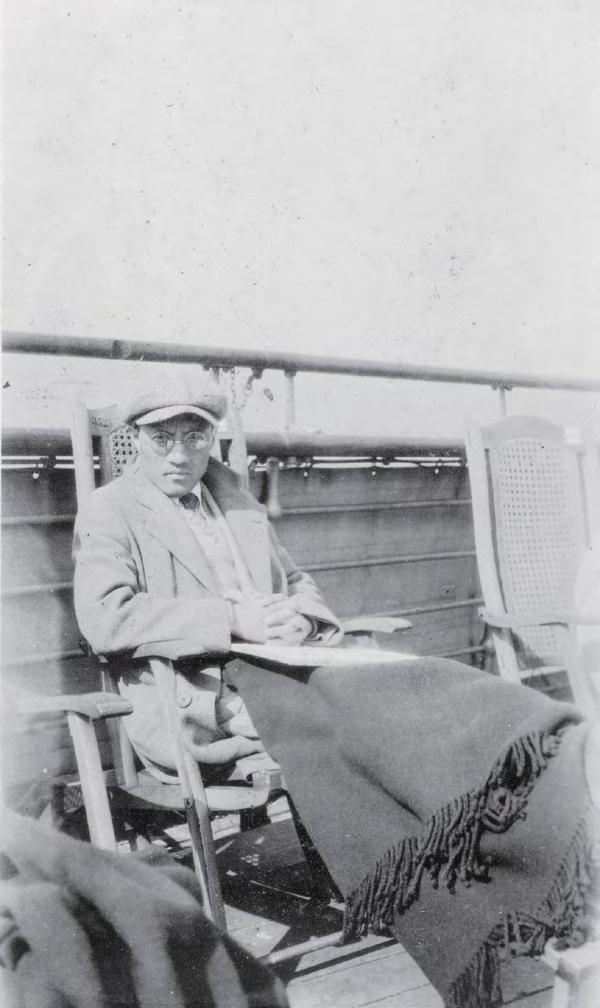
him. Though he had established his name as a calligrapher and painter, his declaration of self was beyond those skills: “I am first, a physiognomist; second, a poet; third, a calligrapher; and fourth, a painter.”94
“The two individuals were well matched in temperament— staunch and upright.”95 Though in later years Tong Jun was caught up in the war and drifting throughout much of China, he never let go of two of his teacher’s paintings. Both, regrettably, were lost in house searches during the Cultural Revolution. Tong Jun’s “towering mountains, deep valleys and hidden streams, sweeping dark lines and lively ink spots are enchanting.”96
On June 12, 1978, Tong Jun painted a scene for his Tsing Hua College roommate, Lin Tongji.
He painted on a vertical scroll to emphasize the height, distance, and depth of the scene. A steep precipice occupies the center, bordered on the left by several mountain peaks and a waterfall cascading into a stream flowing through a valley. The closer scene is a hut under ancient pines, and within a bamboo grove, in front of which stand a pair of robed recluses, likely to represent the painter and his old friend.97
The colophon on that painting notes:
It always makes me emotional when I recall all my talented roommates and classmates from earlier days, who are now spread across all over the world and cannot easily meet again. When I visited Mount Huangshan (eastern China) and viewed Shixin Peak, I thought how wonderful it would be to build a hut at the foot, where I could feast on the sunrise and drink the dew, mock the moon, and sing with the wind. Close friends would stop by from time to time, knocking at my door to search for poetic expressions and
In 1972, Tong Jun’s younger brother, Tong Yin, sought refuge in Nanjing and stayed with them for more than two years.
An overseas student in Japan, he was chief engineer for the Northeast Power Company for nearly fifty years. From the 1920s to the 1960s, he designed and led the construction of the power grid for the three northeast provinces. After going their own way in the wake of the September 18 Incident, the brothers managed to survive various disasters. A Leica camera in hand and decadesold American hiking boots on his feet, Tong Jun traveled with Tong Yin from Nanjing to She County in Anhui Province, where they climbed Huangshan’s Tiandu peak. From there, they went to Shanghai for a reunion with their third brother, Tong Cun. That same year, Tong Jun visited Nanjing city’s Zhan Garden—one of the treasures of Jiangnan (Suzhou) gardens—for the last time; it is not hard to imagine the depth of emotion he felt then.
Tong Jun’s father, Enge, was the first member of the extended family to go to school. As a student from Fengtian Prefecture, he participated in the imperial examination, and was one of eleven candidates awarded a jinshi degree at the grade seven officer level. His influence on Tong Jun was extensive.
According to Tong Cun, because their mother—a Han Chinese from Shandong—migrated to Manchuria, Tong Jun, Tong Yin, and Tong Cun were considered to be of Manchu-Han mixed blood. After passing the imperial examination,152 Enge established
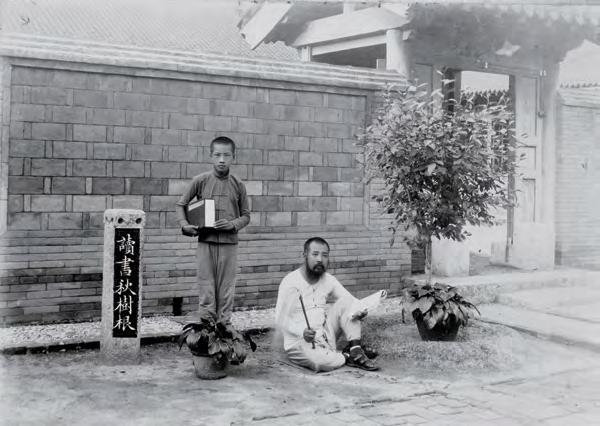
a girls’ normal school in Shenyang and served as its principal. Using the authority of his position, he chose the top three girls— all members of the Manchu Yellow Banner royal family—to be his sons’ wives. This was because his second—and favorite son— Tong Yin, who was the 400- and 800-meter race champion of the three northeast provinces, was friendly with one Miss Wang, the girls’ 400-meter champion. Their private romance had shocked Enge, forcing him to decide upon arranged marriages for all three sons. Tong Jun was married at nineteen, to Guan Weiran, née Guan Suwen. After they were married, she worked as an elementary school teacher. Most of warlord Zhang Zuolin’s children were her students, including Zhang Xuesi. The name of Tong Jun’s grandson, Tong Wen, is borrowed from his grandmother’s maiden name, while the name of his granddaughter, Tong Wei, is borrowed from her grandmother’s married name—both names so chosen to memorialize his deceased wife.
Not long after becoming principal, Enge became the head of the Fengtian Education Office, the equivalent of an education bureau for the three northeast provinces. It was a job for which he was eminently qualified, since he had gained considerable experience by planning his sons’ education. At the age of eight, Tong Jun was sent to Fengtian Kindergarten in Shenyang, where he was tutored by a Japanese lady. She taught him handicrafts, such as paper cutting, collaging, and wood carving. Once, while carving a model train, he cut his finger, which left a scar. At ten, he entered the Fengtian No. 1 Elementary School, where his father insisted that he be taught the Chinese classics, committing to memory texts he did not understand. Seven years of memorizing the classics established a fine foundation in classical Chinese and planted the seed of the writing style that he would use later in life. At seventeen, Tong Jun entered Fengtian Number One Middle School, where he received a broad-based, modern education. During this time, he often went to the local YMCA (Young Men’s Christian Association) to attend lectures on science and the arts given primarily by returned teachers from Japan. Lectures on world geography and history opened windows to other civilizations for the young Tong Jun. He began a diligent self-program of English study, reading a Shanghai English-language newspaper after class and making frequent visits to the YMCA for lectures in English. He also began studying Western oil painting and pencil sketches. A hundred years later, we can only marvel at Enge’s plan and the foresight he showed toward his sons’ education.
The day after the incident on September 18, 1931, Japanese troops occupied Shenyang and shut down the Beiling District campus of Northeastern University, forcing the dismissal of all the students. The streets were taken over by Japanese police, so Tong Jun and Guan Weiran moved their family from university housing to Enge’s large compound in Haoran neighborhood. Chaos reigned in town as Korean thugs spread fear. On the third
Tong Wen was born in 1962. Tong Jun chose names for this grandson and for his granddaughter based on his wife’s name before she was married.
From today’s perspective, Tong Jun’s marriage would be considered a standard arranged union. All the arrangements were made by his father, Enge.
Tong Linsu recalled:
In 1920, Grandfather brought my father and mother together in accordance with feudal traditions. She was a Manchu, an outstanding student at a girls’ normal school. They did not have any affection for each other or get to know each until after they were married. Since Father was away at school, they were apart much of the time, but they grew closer as husband and wife. She helped him in his career, and even transcribed the manuscript for Jiangnan Yuanlin Zhi in her own hand. Sadly, exhausted by a life of hard work, she died in 1956, which came as a real blow to Father. It occurred at a time when he was so seriously ill; he was unable to say good-bye, something he considered the greatest regret of his life. He kept a photo of her at the head of his bed, and never remarried.185
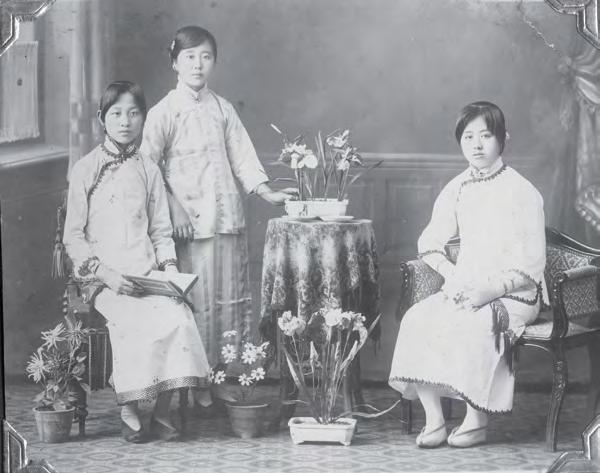
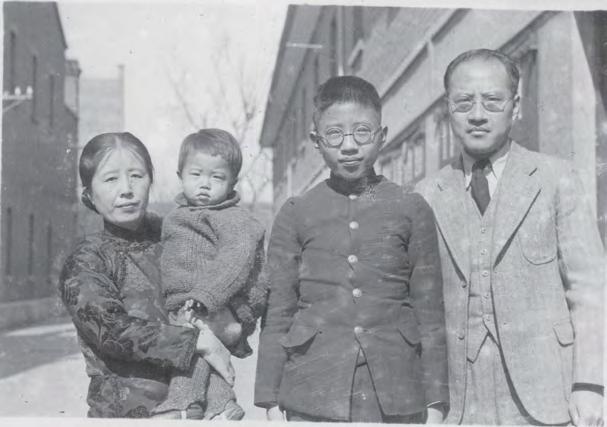
(top) Center (standing): Tong Jun’s wife Guan Weiran (bottom) Tong Jun and his family, having recently arrived in Shanghai in the early 1930s (left to right) Guan Weiran, Tong Linsu, Tong Shibai, and Tong Jun
Despite the reality that it was an arranged marriage, and that Tong Jun was a staunch male chauvinist as a young man, when he was studying and working in the United States and when he returned to China, he and his wife were a devoted couple. Their first son was born two years after they were married. When Tong Jun was in the United States, he sent his wife a photo, on the back of which he copied a poem by renowned poet Li Shangyin:
Lord, You ask when I’m coming home, I do not know. On Sichuan Mountain, night rains swell autumn ponds. When shall we again trim wicks by the western window and talk together about rain falling on Sichuan Mountain?186
He later wrote a poem of his own:
I look in the mirror and see gray threads among the black, My fondest dream is to stroll again in the garden. Night rain falls beyond the western window, as my return is delayed, and I long to hear the heart-warming sounds of neighbors laughing.187
Tong Wen also shared:
After Grandfather returned (from the United States), Grandmother learned how to cook Western food. Our tableware was mostly Western, and we had a foreign stove and oven. In Nanjing, we even raised turkeys. Her Western meals looked and tasted like the real thing, and I heard words of praise from many friends of the family.188
Guan Weiran studied English with Tong Jun, and together, they watched Hollywood movies. According to Tong Shibai, “When Tong Jun went to Shanghai, Mother heard that it was a sort of sin city, and was concerned.”189 However, not long after, Tong Jun sent for his wife and children to join him.
FAMILY TREE
Jun
Guan Weiran
Yin
En Yuzhi
Cun
Zhao Ruilin
Shibai
Zheng Min
Linsu
Zhan Hongying
Linbi
Gu Danyun
Linyi
Yu Fenglan
Linhui
Li Changsong
Linfen
Chen Yiyuan
Linxu
Fu Shangyuan
Linfu
Wang Qidong
Wei Lang Wen
Bin Ming
Jun Ming
Li Jing
Chen Xun
Chen Mei
Yan Xi
Wang Yi
Published in Australia in 2024 by
The Images Publishing Group Pty Ltd
ABN 89 059 734 431
Offices
Melbourne
Waterman Business Centre
Suite 64, Level 2 UL40
1341 Dandenong Road
Chadstone, Victoria 3148
Australia
Tel: +61 3 8564 8122
books@imagespublishing.com www.imagespublishing.com
New York
6 West 18th Street 4B
New York City, NY 10011
United States
Tel: +1 212 645 1111
Copyright © Zhang Qin and Howard Goldblatt 2024
The Images Publishing Group Reference Number: 1656
Shanghai 6F, Building C, 838 Guangji Road
Hongkou District, Shanghai 200434
China
Tel: +86 021 31260822
All photography and illustrations are supplied courtesy of the family archives of Tong Jun, by his grandson Tong Ming. Individual photographers are unknown.
All rights reserved. Apart from any fair dealing for the purposes of private study, research, criticism or review as permitted under the Copyright Act, no part of this publication may be reproduced, stored in a retrieval system or transmitted in any form by any means, electronic, mechanical, photocopying, recording or otherwise, without the written permission of the publisher.
Title: A Solitary Traveler in the Long Night: Tong Jun—The Later Years, 1963–1983
Author: Zhang Qin (Translated by Howard Goldblatt)
ISBN: 9781864709438
Printed on 128gsm uncoated paper (FSC) by Everbest Printing Investment Limited, in Hong Kong, China.
IMAGES has included on its website a page for special notices in relation to this and its other publications. Please visit www.imagespublishing.com
Every effort has been made to trace the original source of copyright material contained in this book. The publishers would be pleased to hear from copyright holders to rectify any errors or omissions.
The information and illustrations in this publication have been prepared and supplied by Zhang Qin, Howard Goldblatt, and Tom Ming. While all reasonable efforts have been made to ensure accuracy, the publishers do not, under any circumstances, accept responsibility for errors, omissions and representations express or implied.
